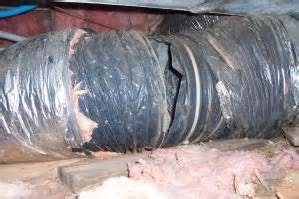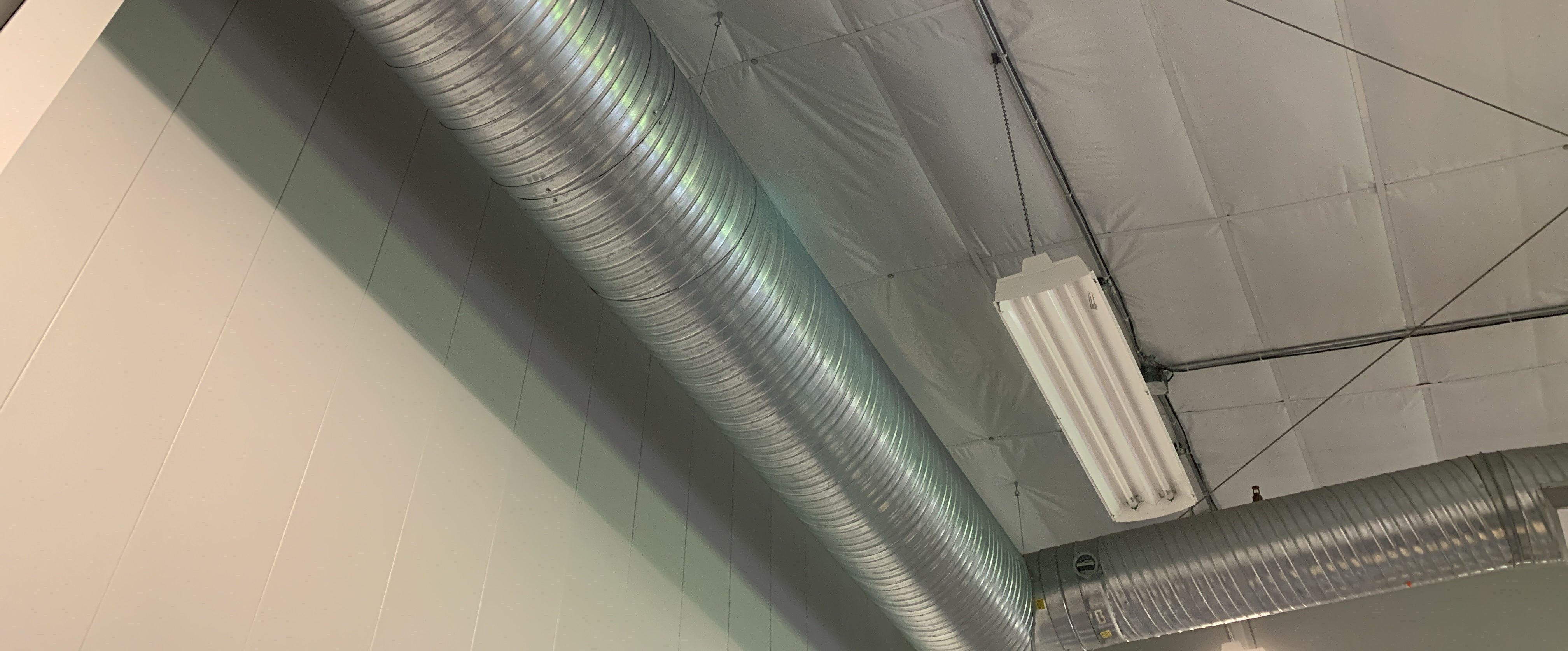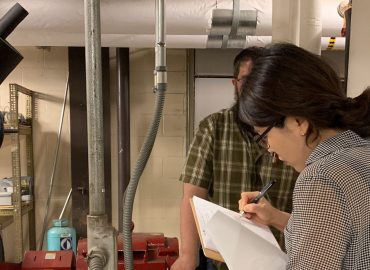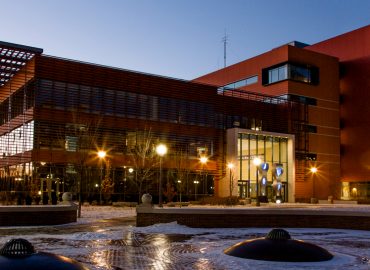Energy efficiency discussions often focus on the heating and cooling equipment; the air distribution system (the HVAC ductwork) is rarely mentioned. Research has shown that in commercial buildings, between 10% to 20% of total air provided by the supply fan is lost to leaky ducts, which can add 4% to 9% in heating and cooling energy consumption. Since ductwork delivers heated or chilled air to a conditioned space, any leakage in the duct means that extra air must be supplied to heat or cool a space, and some spaces may be difficult to keep warm or cool. Leaky ducts increase the load on the plant and fan motor, resulting in increased utility costs. In addition, dust, dirt, and other contaminants can get sucked into return air ducts when there is a leak, leading to indoor air pollution. This can be a significant problem for people suffering from allergies and asthma.
Sealing HVAC duct systems saves cooling, heating, and fan energy and can lead to a more comfortable and healthy building environment. Sealing leaks reduces the amount of heated or chilled air the supply fan must handle to deliver the same amount of air to the conditioned space, makes the building more comfortable, and reduces air contaminants.

Building a well-designed duct system
Sealing ducts during new construction is far simpler and less costly than after construction has been completed. “Seal tight, ventilate right” applies just as well to the duct system as it does to the building envelope.
When designing a building, consider properly sizing ducts, minimizing and properly designing bends, locating ducts within the thermal envelope, and addressing duct connections. Properly sealing return air systems is just as important as sealing ducts on the supply side. If return ducts are leaky, air from unwanted sources can combine with the return air stream and be distributed throughout the building.
Ducts located outside the thermal envelope are of particular concern. These unconditioned spaces can lead
to significant heat gain and losses if they aren’t properly insulated and sealed. Leaky ducts within the thermal
envelope are also of concern since zones being supplied by these ducts are not receiving their proper air volumes, leading to a host of balancing and thermal conditioning problems.
SEDAC recommends meeting the standards for ductwork construction, established by The American Society of Heating Refrigeration and Air Conditioning Engineers (ASHRAE standard 90.1). ASHRAE has established certain minimum duct sealing levels, based on static pressure and the duct location. Naturally, the higher pressures a duct will be exposed to, the greater the importance of sealing. The Sheet Metal and Air Conditioning Contractors’ National Association (SMACNA) also addresses duct design and construction. SMACNA’s HVAC Duct Leakage Test Manual provides information on duct system design, performance and testing procedures.
Signs of leaky ducts

During SEDAC energy assessments, it is common to find leaky duct systems and disconnected ducts. Extreme leaks usually have dust on duct surfaces and black marks at leakage locations. More subtle leaks are not as visible. To locate less visible leaks, turn on the furnace and feel along the sides of the air ducts until you can feel hot air escaping. Other signs of leaks are rooms that are difficult to keep cool or warm, rooms that feel stuffy or congested, and unreasonably high utility bills. A qualified service professional can help you locate and fix leaky ducts.
Testing ductwork
Specialized diagnostic tools and equipment can be used to determine the integrity of ductwork. These tests use established protocols and can help pinpoint problem areas. These tests should be conducted by trained professionals and are becoming a standard procedure of the building commissioning process. Particularly for high-performance buildings. Due to the importance of this topic, some building codes now require testing a certain portion of the ductwork system and the emerging trend is for increased testing and lower leakage rates.
Fixing leaky ducts
There are various ways to seal duct systems, including using liquids, mastics, gaskets, and tapes. Ducts that are easily accessible can be sealed with liquids or mastics that are spread over connections or with special duct sealing tapes. Ducts located within inaccessible building cavities can be sealed using more sophisticated, and costly, aerosol duct sealing techniques. Duct sealing can be a labor-intensive process, costing approximately $.40/SF of floor space. Simple paybacks can range from seven to fourteen years. The benefits, however, extend beyond economics and include occupant comfort, improved air quality, and extended HVAC system life.





